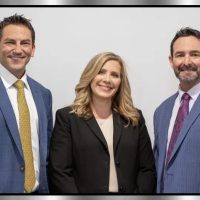What Happens When Both Parties Are At Fault In A Car Accident?

We tend to think of car accidents as being very black and white—one person is at fault, and another person is innocent or not at fault. And while many car accidents do work that way, the reality is that some cases aren’t so clear. In some cases, both sides may be at fault for an accident, or it just may not be clear who was responsible for the accident.
What happens then? Can you recover damages for injuries you sustain in a car accident where both you and the other driver are at fault?
You Can Still Recover
Admittedly, when both drivers have some responsibility for the car accident, the case does become more difficult, and it may be less likely to settle before a trial. But that doesn’t mean you can’t recover damages for your injuries—you can.
The law doesn’t care who is “officially” at fault for a car accident. Rather, the law lets a jury look at the actions and behaviors of the drivers, and determine who is liable for the accident and to what extent. That’s because Florida is a pure comparative negligence state.
When both parties have fault for the accident, the victim will ultimately recover the percentage of damages that the other side was liable for. So, for example, if your damages amount to $100,000, but the jury finds that you were 50% responsible for the accident, you would recover only $50,000. Of course, if you were 99% liable for the accident, you would recover only $1,000.
Note that this is different from some other states. In some states, a victim cannot recover anything—not a penny—if they were 50 or 51% liable for the accident. Thankfully, Florida doesn’t follow this rule.
What Does the Evidence Show?
The key to a case when both drivers are responsible for an accident, is to try to convince the jury that the other driver is more—perhaps, way more—responsible for the accident than you are, even if you are both somewhat responsible for the accident.
This is often done through eyewitness testimony, or the use of experts, who will look at an accident scene, pictures, and other data, and come to a conclusion about how an accident happened. Other sources of information, like your car’s data recorder, or analysis of the location of the damage to your vehicle, may also be used.
Juries also have the power to simply believe who they want to believe; in the event that two witnesses’ testimonies conflict, a jury can choose who they find to be more credible and more believable.
Remember that you shouldn’t assume that you are liable for an accident. And don’t admit to being responsible, without speaking to an attorney. You may not even be aware that the other driver, and not you, is at fault.
Call the West Palm Beach personal injury attorneys at Pike & Lustig today if you have questions about who is at fault in your car accident case.
Sources:
leg.state.fl.us/statutes/index.cfm?App_mode=Display_Statute&URL=0700-0799/0768/Sections/0768.81.html
investopedia.com/terms/c/comparative-negligence.asp#:~:text=Comparative%20negligence%20is%20a%20principle,respective%20contributions%20to%20the%20accident



